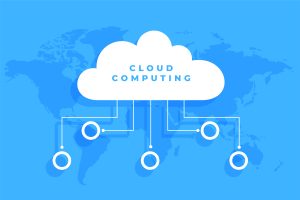Introduction
In the current business marketplace where completion is extremely high, businesses constantly look for new approaches to enhance the quality of their products and lower expenses. The application of Predictive Maintenance solutions is probably the most influential improvement in recent times. Businesses can effectively eliminate unproductive downtime and reduce maintenance costs by using AI-enabled Preventive Maintenance Optimization, delivering more productivity and profits.
In this blog, we will examine how predictive maintenance reforms operations by applying downtime reduction tactics and maintenance budget cost-saving methodologies, driven by predictive analytics for equipment reliability and machine learning in maintenance.
Some Facts and Stats That Will Surprise You:

- Predictive maintenance can extend the lifetime of aging assets by up to 20%. – Infraspeak
- A new study from IoT Analytics predicts the predictive maintenance market will reach a substantial $28.2 billion by 2026, reflecting a significant rise from its current value of $6.9 billion.
- Studies show that roughly 10% of industrial equipment fails due to wear and tear, with the rest being preventable through proactive measures. – UpKeep
Understanding Predictive Maintenance

Predictive maintenance is a process that uses modern technologies such as AI and machine learning to foresee equipment failures before they take place. This proactive approach is different from traditional reactive maintenance, which only deals with the issues after they have happened, often leading to unexpected downtime and higher costs. Predictive maintenance is a solution that uses the data from different sensors and systems to monitor the equipment performance in real-time, thus, it is possible to make the interventions at the right time and it also helps to optimize the maintenance schedules.
Advantages of Predictive Maintenance
- Reduced Downtime: Predictive maintenance is a technique that helps to foresee possible failures before they happen so the occurrence of unexpected failures and downtime are also controlled.
- Cost Savings: It prevents major failures, lowering repair costs and emergency maintenance expenses.
- Extended Equipment Lifespan: Regular monitoring and timely interventions help prolong the life of equipment.
- Improved Safety: Through the process of predictive maintenance, equipment will be checked if they are in good working condition thus, workplace safety will be improved.
- Increased Efficiency: Maintenance activities are better planned and scheduled, leading to more efficient use of maintenance resources and personnel.
- Data-Driven Decisions: Data analytics can be used for maintenance decisions which would enhance the precision and efficiency of the maintenance.
Disadvantages of Predictive Maintenance
- High Initial Costs: The cost of putting into the predictive maintenance systems can be high, which includes the purchase of sensors, data acquisition systems, and analytic software.
- Complexity: The technology and skills required to prepare and control the predictive maintenance systems can be complex, thus, training and specialized knowledge are also needed.
- False Positives/Negatives: Predictive models may sometimes give incorrect predictions, which in turn, leads to unnecessary maintenance actions (false positives) or missed failures (false negatives).
- Integration Issues: Merging the predictive maintenance systems with the present maintenance practices and enterprise systems can be a hard thing to do.
- Dependence on Technology: A lot of dependency on technology can be a disadvantage if there are technical failures or cyber-security issues.
Downtime Reduction Strategies

The downtime can be very expensive for businesses, especially in the manufacturing and other industrial sectors. The use of AI-based downtime prevention strategies is vital for the continuity of operations. Predictive maintenance technology enables companies to plan maintenance activities during downtimes and thus avoid unforeseen interruptions.
Here are a few specific downtime reduction strategies:
- Data Collection and Monitoring: The IoT sensors are used to constantly check the equipment conditions, and data is analyzed in real-time to find the early signs of failure.
- Advanced Analytics and Machine Learning: Create predictive algorithms and anomaly detection systems to anticipate the equipment problems before they actually come.
- Condition-Based Maintenance (CBM): Configure the operating conditions that cause the maintenance actions when the thresholds are crossed, according to the insights data.
- Root Cause Analysis (RCA): Act root cause analyses after predictive warning to eliminate the recurrence and upgrade the predictive models.
- Regular System Audits and Updates: The audit predictive maintenance systems must be accurate and the algorithms should be continuously improved with new data.
- Scalable and Flexible Systems: Create variable and flexible predictive maintenance solutions that fit the organizational needs.
- Vendor Collaboration: Make a deal with equipment vendors to get information on the failure modes and get predictive maintenance support in service contracts.
Maintenance Cost-Saving Techniques

Predictive Maintenance saves costs by letting the specific interventions which are based on the equipment condition, thus, it decreases the need for the extra labor and the expenses of the parts. This system is different because it eliminates routine checks and its main function is to concentrate on maintenance only when it is necessary.
Here are a few maintenance cost-saving techniques:
- Optimized Maintenance Scheduling: The timetable of maintenance activities should be linked with the real conditions of the equipment and at the same time, it should be adjusted to the maximum use of the resources and the least downtime.
- Reduction in Unplanned Downtime: The use of early warning systems to notify possible failures and thus proactively fix them will prevent costly unplanned downtime.
- Extended Equipment Lifespan: Troubleshoot the issues as soon as they arise to prolong the life of the equipment, resulting in a reduced number of replacements and associated expenses.
- Energy Efficiency: Keeping track of energy consumption patterns will help you to detect and fix the inefficiencies, thereby, upgrading the equipment to the normal working level and cutting down the energy bills.
- Reduced Labor Costs: Concentrate on the problem areas that are predicted to be troublesome, reduce the inspections and the maintenance that are not necessary, and mechanize the processes of collecting and analyzing data.
Industrial AI Applications for Uptime

Industrial AI applications on uptime concentrate on the enhancement of the availability and reliability of the types of equipment. For instance, in the field of manufacturing, AI-driven predictive maintenance can be a tool to guarantee that the production lines work flawlessly without any interruptions, thus ensuring the production targets are achieved and the waste is minimized. In other industries like the energy and transportation sectors, the importance of keeping the uptime high is the same as in the manufacturing industry for the efficiency of the operation and customer satisfaction. With the use of AI solutions, businesses can boost their operational efficiency and at the same time avoid the loss of market competitiveness because of time-related setbacks.
Final Thoughts
Predictive maintenance is now the new way for businesses to deal with the issue of equipment maintenance and operational efficiency. Through the use of AI-driven maintenance optimization, businesses can greatly decrease the downtime and maintenance costs and at the same time, they can boost the reliability and performance of the equipment. Predictive maintenance solutions, using machine learning and predictive analytics, help businesses to take proactive maintenance approaches and, finally, to increase their productivity and profitability. As industries keep on welcoming these advanced technologies, the future of maintenance will surely be more efficient, cost-effective, and reliable.
Ready to unlock the power of AI for smarter, more efficient maintenance? GrayCell Technologies transforms equipment maintenance with AI-driven solutions, cutting downtime and costs while boosting reliability. Book your free consultation with GrayCell Technologies today!









